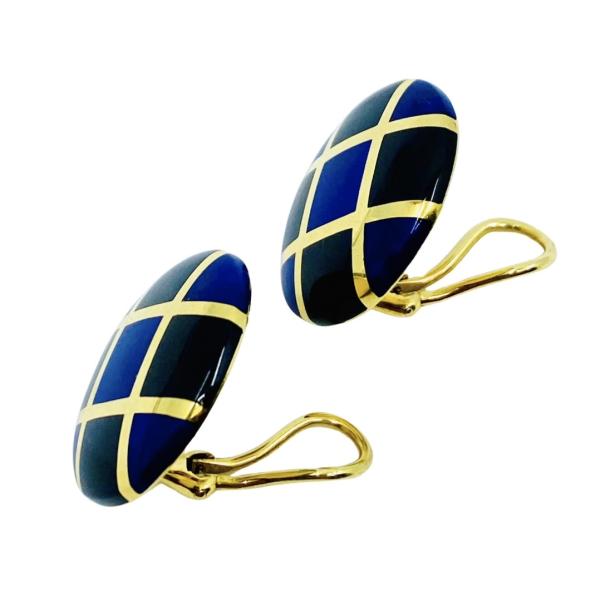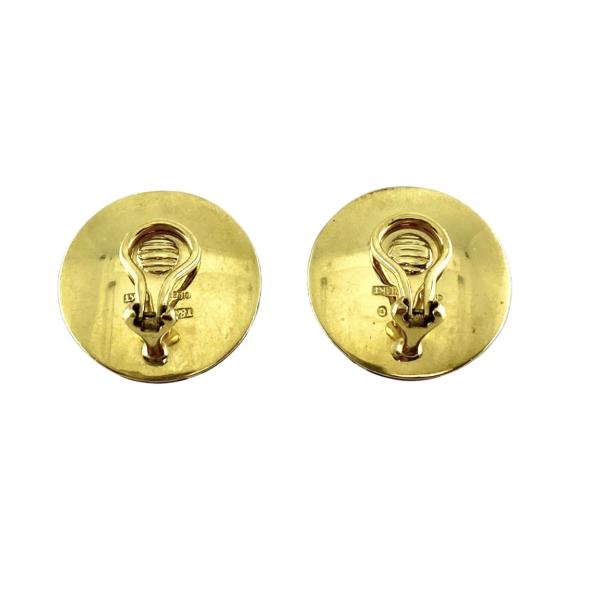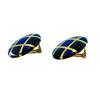About Angela Cummings Brand
Angela Cummings was one of the most prominent fine jewelry designers and women jewelry designers. Many of her famous designs were inspired by nature and three-dimensional art of sculpture.
Angela Cummings grew up in the USA and received her art and jewelry education in Europe. She studied painting in Italy and gemology and goldsmithing in Germany.
When she came back to the United States in the 1960s, she was right away hired by Tiffany & Co. and became Tiffany’s in-house designer. In 1974 she was the first woman who had a named collection, “Angela Cummings Exclusively for Tiffany & Co.” Soon after that Tiffany created named collections by Elsa Peretti and Paloma Picasso.
In the 1970s and 1980s, Angela Cummings created her distinctive inlaid designs with semiprecious stones such as coral, jade, lapis lazuli, jasper and mother of pearl, which she became famous for. Inlay is a decorative process that involves setting one material into another to create a pattern or design. It often featured contrasting materials like gemstones, precious metals, and sometimes enamel or wood. These materials were carefully set into the metal surface to create intricate patterns, geometric shapes, or natural motifs. Angela Cummings incorporated this technique in her jewelry designs to add texture and depth to her pieces. Nowadays, these designs are highly sought after and very collectable.
What made Angela Cummings’s designs recognizable are the sensuous gracefulness, deep inspiration by natural forms and biomorphic use of precious metals.
Angela Cummings retired in 2003. She moved to Utah to enjoy spending more time with her family.
Angela Cummings jewelry features gemstone jewelry, diamond jewelry and precious metal jewelry including platinum jewelry and gold jewelry. Our estate jewelry collection comprises vintage Angela Cummings bracelets, rings, earrings, and necklaces.
About Enamel Jewelry
Enamel jewelry is beloved for its glossy, colorful appearance. Enamel has been in jewelry making since the 1200s in China and Persia. It flourished again during the Art Nouveau era and had its comeback in the 1970s. Multiple iconic pieces, such as Panthere De Cartier, Webb Kingdom Collection or the VCA pieces from the 1920s are still sought after. Today enamel is also widely used in jewelry design.
– Plique-a-Jour is the most difficult among enameling techniques. Plique-a-Jour was especially popular among such Art Nouveau artists as Rene Lalique, Louis Comfort Tiffany and Peter Carl Faberge. The name can be translated from French as “to let light in”. The method allows light to go through the piece and make it glow. It’s done by applying the enamel powder in between the little metal sections while using the foil to hold it together. After the enamel solidifies, the foil gets removed. This process creates a stained-glass appearance with delicate colors and lights coming from within.
– Cloisonné – or hard enamel – is done by layering enamel past the metal line. But first the design is stamped into a metal base. Then it gets polished down to the level of the metal. Due to the lengthier process, Cloisonné is considered more durable and higher quality.
– Meenakari — this technique begins with the design being engraved onto the metal. Then the enamel is filling the etchings. To achieve a vibrant color that Meenakari jewelry is famous for, the piece is polished with organic acids. A layer of the transparent enamel finalizes the process.
We have a great selection of enamel jewelry online, or you can see it in person while visiting our store in Beverly Hills.

















